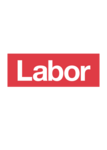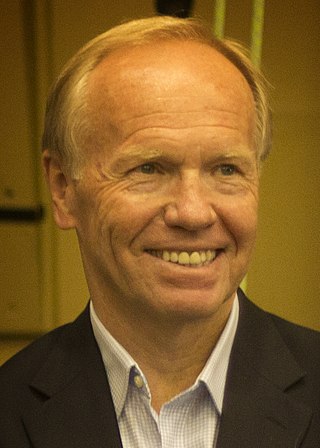
Peter Douglas Beattie is an Australian former politician who served as the 36th Premier of Queensland, in office from 1998 to 2007. He was the state leader of the Labor Party from 1996 to 2007.
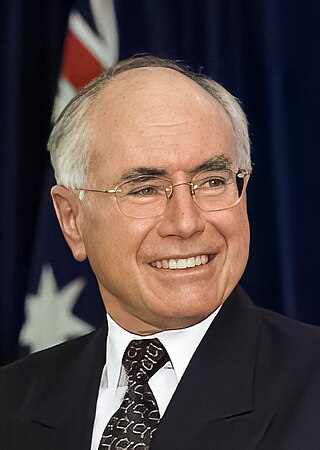
The 2001 Australian federal election was held in Australia on 10 November 2001. All 150 seats in the House of Representatives and 40 seats in the 76-member Senate were up for election. The incumbent Liberal Party of Australia led by Prime Minister of Australia John Howard and coalition partner the National Party of Australia led by John Anderson defeated the opposition Australian Labor Party led by Kim Beazley. As of 2024, this was the most recent election to feature a rematch of both major party leaders. Future Opposition Leader Peter Dutton entered parliament at this election.
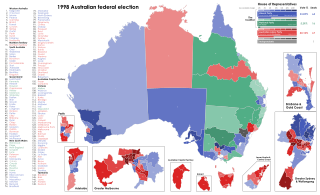
The 1998 Australian federal election was held to determine the members of the 39th Parliament of Australia. It was held on 3 October 1998. All 148 seats of the House of Representatives and 40 seats of the 76 seat Senate were up for election. The incumbent centre-right Liberal/National Coalition government led by Prime Minister John Howard of the Liberal Party and coalition partner Tim Fischer of the National Party defeated the centre-left Australian Labor Party opposition led by Opposition Leader Kim Beazley, despite losing the nationwide popular and two-party preferred vote. However, the Australian Labor Party gained seats compared to the previous election.

Michael Andrew Johnson is a Hong Kong-born Australian former politician who was a member of the House of Representatives for the seat of Ryan in Queensland from 2001 to 2010, representing the Liberal Party from November 2001 to May 2010 and then as an independent from May 2010 until he was defeated by Liberal National member Jane Prentice at the 2010 federal election.
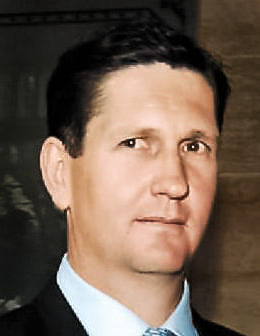
Lawrence James Springborg is an Australian politician. He led the National Party in the Queensland Parliament from 2003 to 2006 and again in 2008, before becoming the first leader of the merged Liberal National Party from 2008 to 2009. He led the LNP again from 2015 to 2016 before announcing his retirement. He currently serves as Mayor of Goondiwindi Regional Council, having been elected in March 2020.
The Division of Grey is an Australian electoral division in South Australia. The division was one of the seven established when the former Division of South Australia was redistributed on 2 October 1903 and is named for Sir George Grey, who was Governor of South Australia from 1841 to 1845.
The Division of Kennedy is an Australian electoral division in the state of Queensland. The current MP is Bob Katter of Katter's Australian Party, who was first elected in 1993.
Elizabeth Anne Cunningham is an Australian politician. She was an independent member of the Legislative Assembly of Queensland from 1995 to 2015, representing the electorate of Gladstone. A conservative MLA in a traditionally Labor district, Cunningham is perhaps most well known for having brought Rob Borbidge's Coalition minority government to power in 1996, following the loss of the Mundingburra by-election by the then Goss Labor government.

The 2001 Queensland state election was held on 17 February 2001 to elect the 89 members of the state's Legislative Assembly. The result of the election was the return of the Labor Party (ALP) government of Premier Peter Beattie, with an increased majority in a landslide. Labor won 66 seats, easily the most it has ever won in Queensland and one of Labor's best-ever results nationwide. There was a 10.07% swing towards Labor, while One Nation suffered a 13.98% swing against it, losing eight seats.

An election was held in the Australian state of Queensland on 9 September 2006 to elect the 89 members of the state's Legislative Assembly, after being announced by Premier Peter Beattie on 15 August 2006.

Gaven is an electoral district of the Legislative Assembly in the Australian state of Queensland. It was created out of the former district of Nerang and the southern segment of Albert in the 2001 redistribution, and encompasses the northern growth corridor of the Gold Coast. The current Member of Parliament is Meaghan Scanlon of the Labor Party. It is currently the only Labor-held seat on the Gold Coast.

Mundingburra is an electoral district of the Legislative Assembly in the Australian state of Queensland. It is currently held by Liberal National MP Janelle Poole.

In Australian politics, the two-party-preferred vote, commonly referred to as simply preferences, is the result of an election or opinion poll after preferences have been distributed to the two candidates with the highest number of votes who, in some cases, can be independents. For the purposes of TPP, the Liberal/National Coalition is usually considered a single party, with Labor being the other major party. Typically the TPP is expressed as the percentages of votes attracted by each of the two major parties, e.g. "Coalition 50%, Labor 50%", where the values include both primary votes and preferences. The TPP is an indicator of how much swing has been attained/is required to change the result, taking into consideration preferences, which may have a significant effect on the result.

Thuringowa is an electorate in the Legislative Assembly of the state of Queensland, Australia.

Kawana is an electoral district of the Legislative Assembly in the Australian state of Queensland. Based on the Sunshine Coast, the district has been held by both sides of politics over its short history.
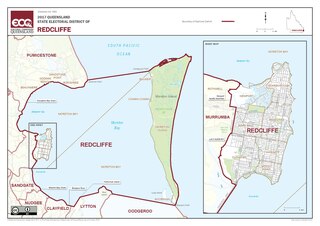
Redcliffe is a Legislative Assembly of Queensland electoral division in Brisbane, Queensland, Australia.
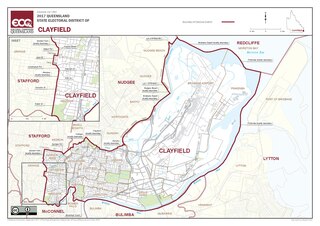
Clayfield is an electoral division of the Legislative Assembly of Queensland. It is centred on the inner northern suburb of Clayfield in the state capital of Brisbane.

Luke Ronald Howarth is an Australian politician who has been a member of the House of Representatives since the 2013 federal election, representing the Division of Petrie. He is a member of the Liberal National Party of Queensland and sits with the Liberal Party in federal parliament.

The 2020 Queensland state election was held on 31 October to elect all 93 members to the 57th Legislative Assembly of Queensland. The Labor Party was returned to government for a third-term, led by incumbent premier Annastacia Palaszczuk. With 47 seats needed to form a majority government, Labor won 52 seats, including all but five in Brisbane, while the Liberal National Party won 34 seats and formed opposition. On the crossbench, Katter's Australian Party retained its 3 seats, the Queensland Greens picked up South Brisbane for a total of 2, Pauline Hanson's One Nation retained Mirani and independent Sandy Bolton retained her seat of Noosa.
The number of seats won by each party in the Australian House of Representatives at the 2022 federal election were: Coalition 58, Labor 77, Australian Greens 4, Centre Alliance 1, Katter's Australian Party 1, and Independents 10.
